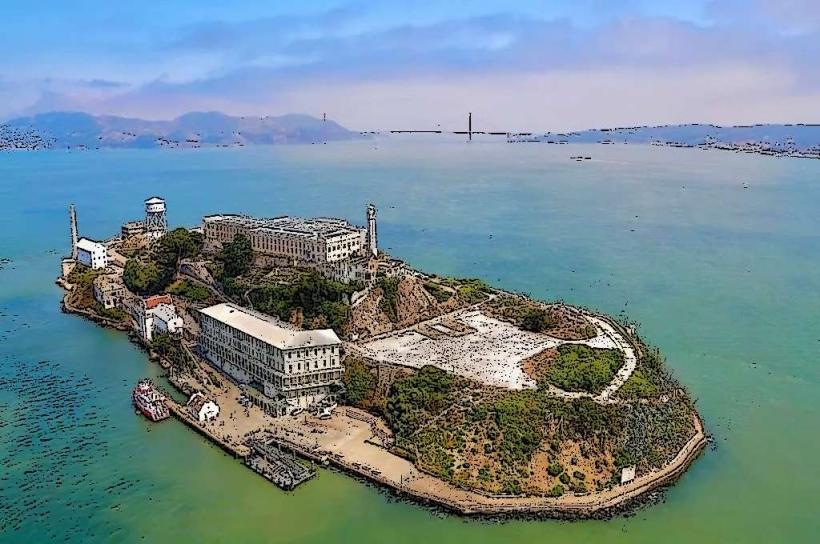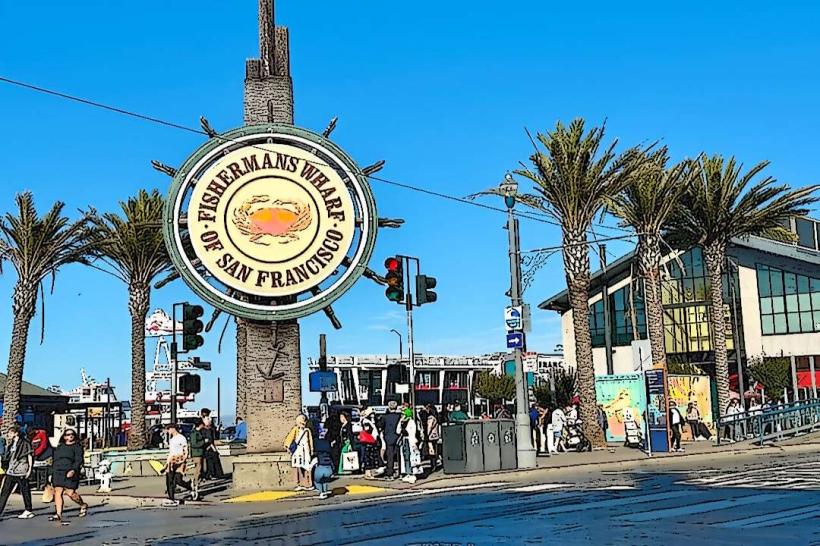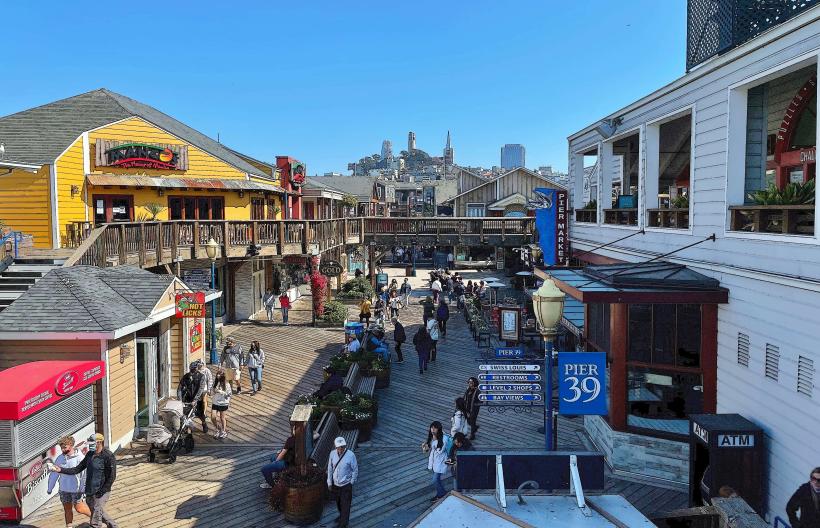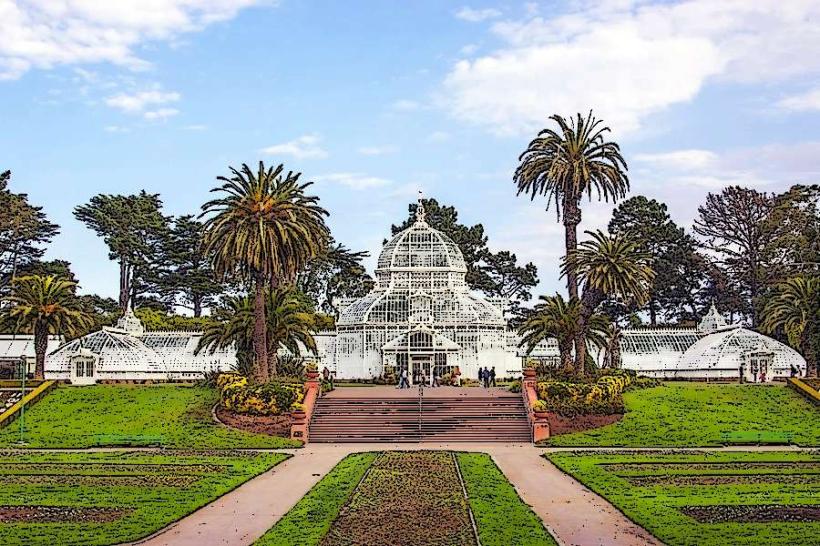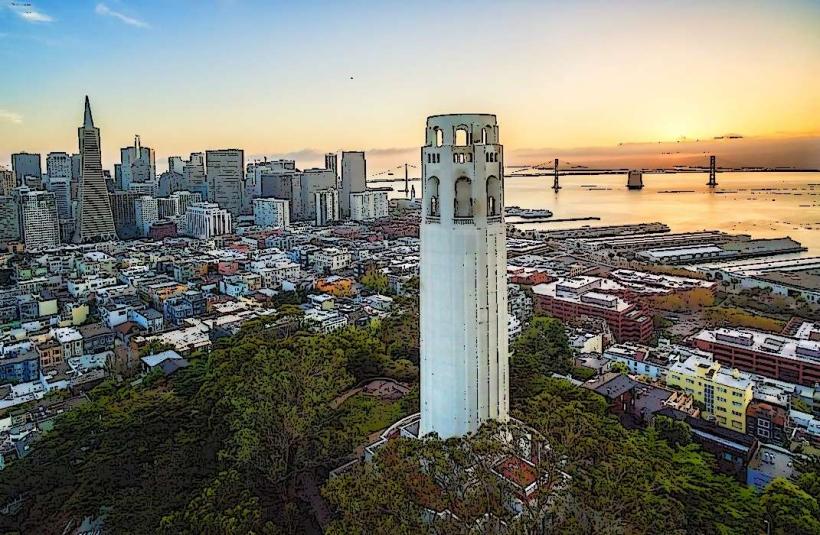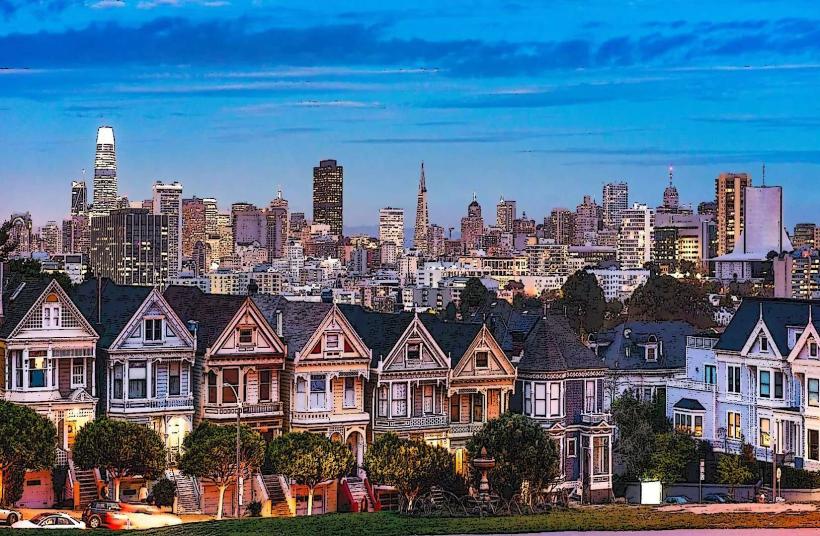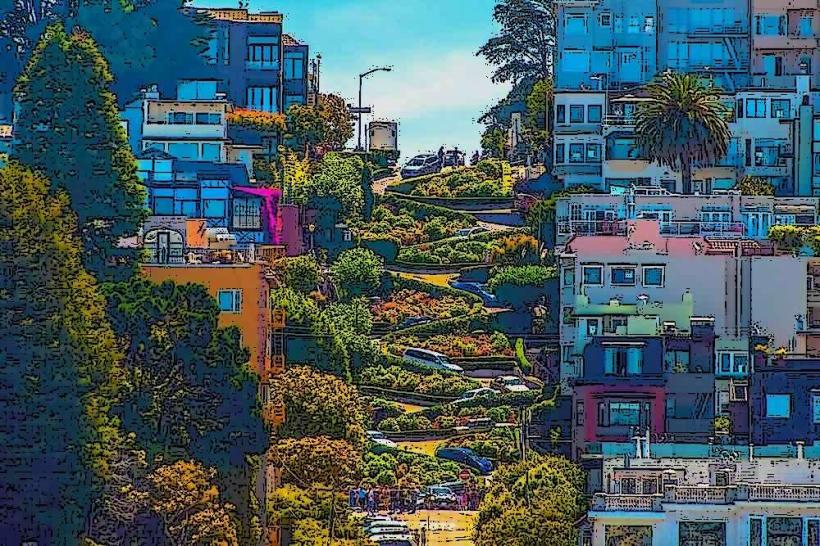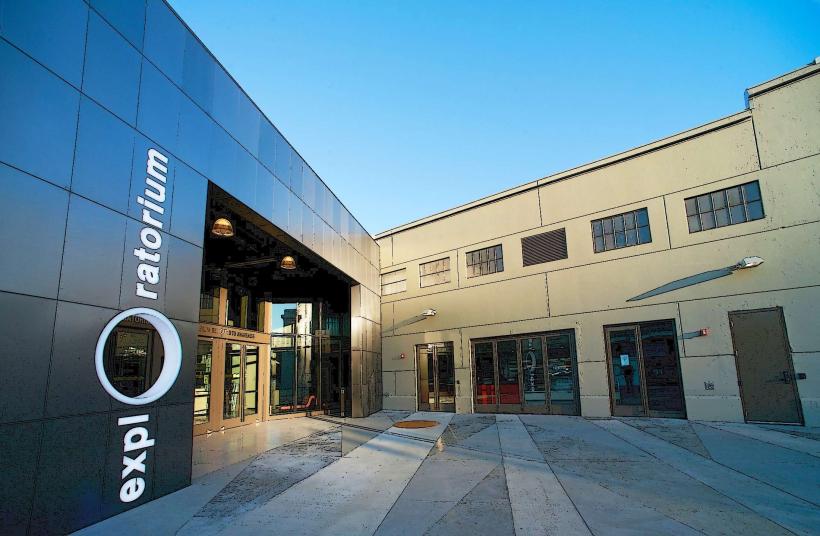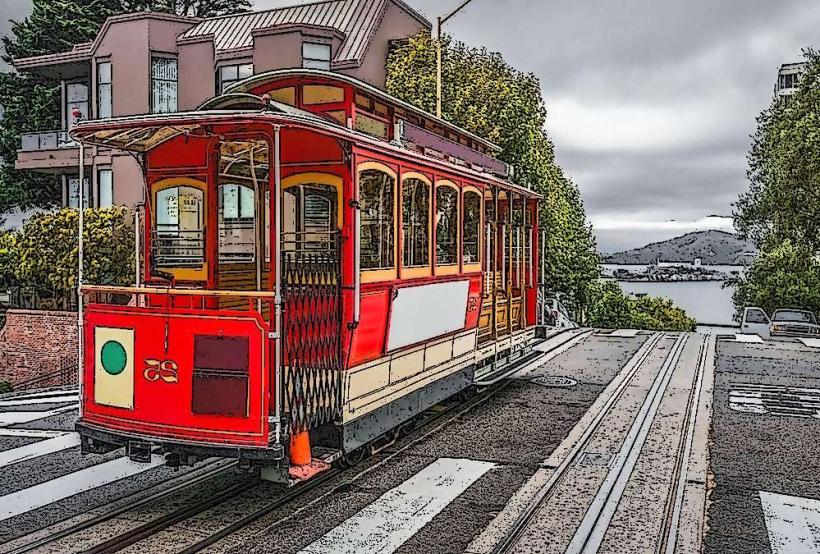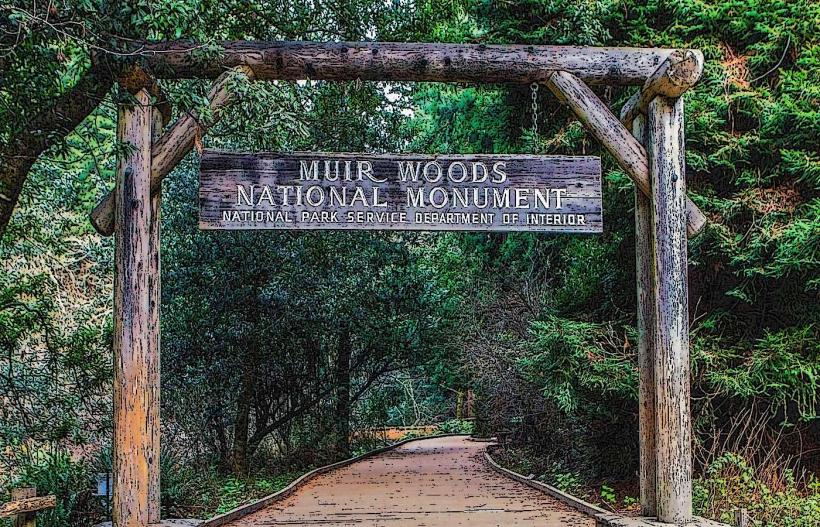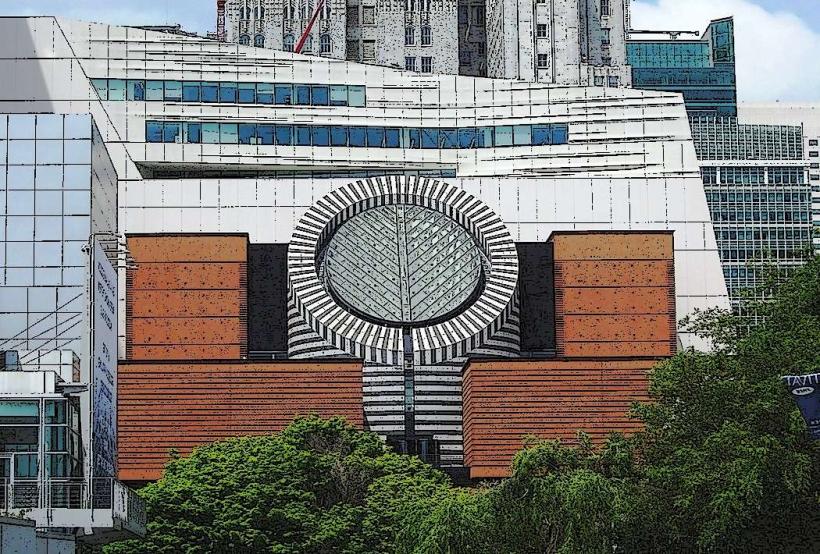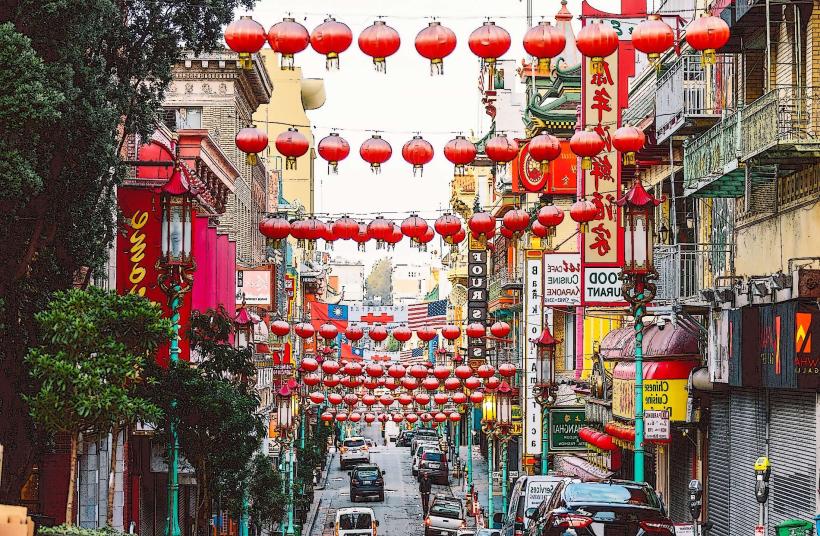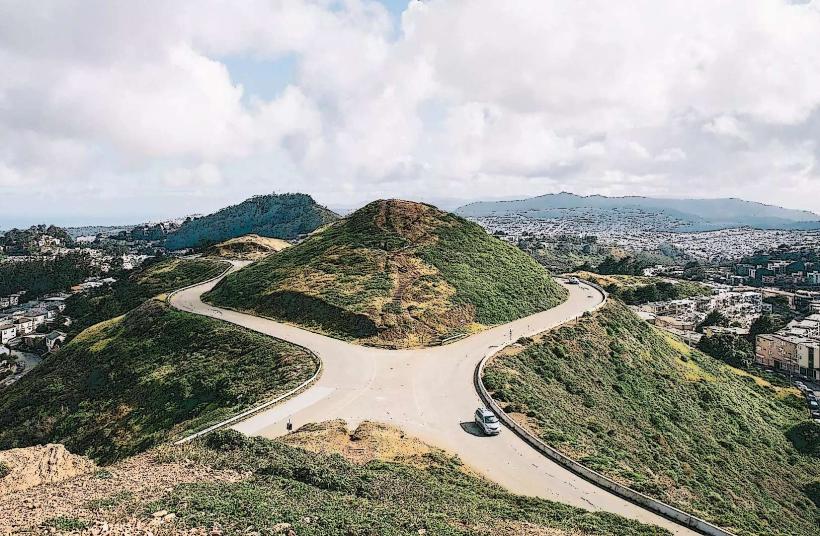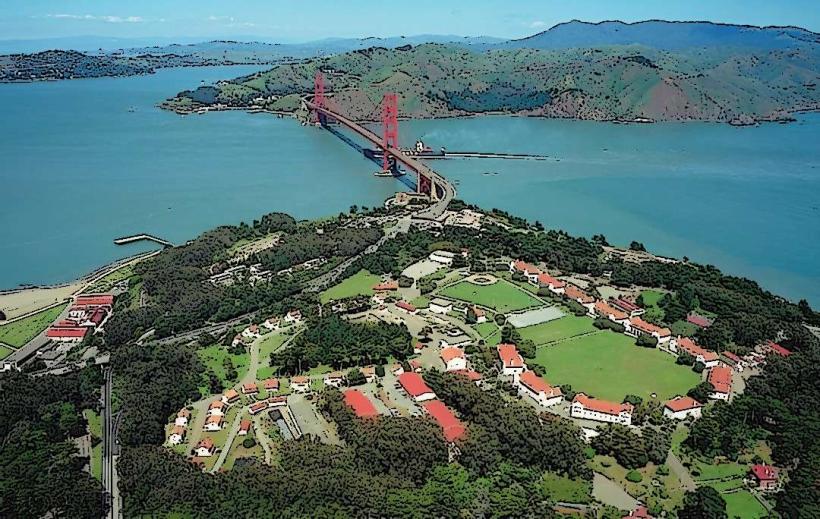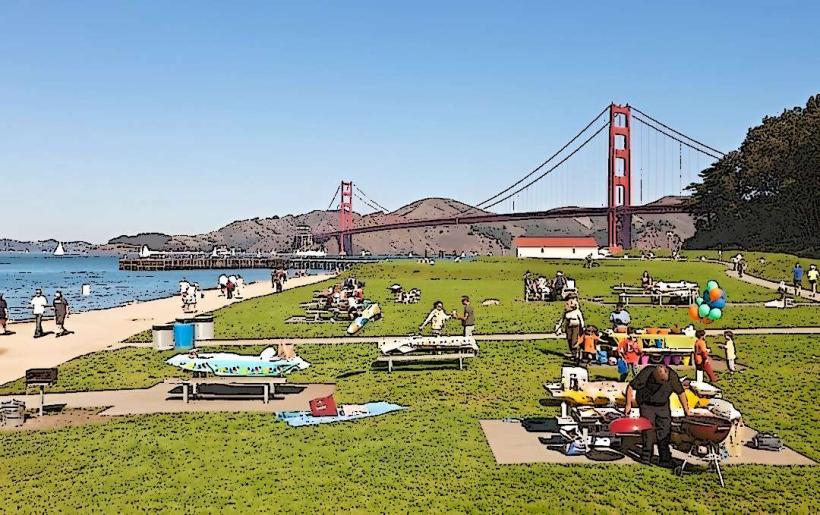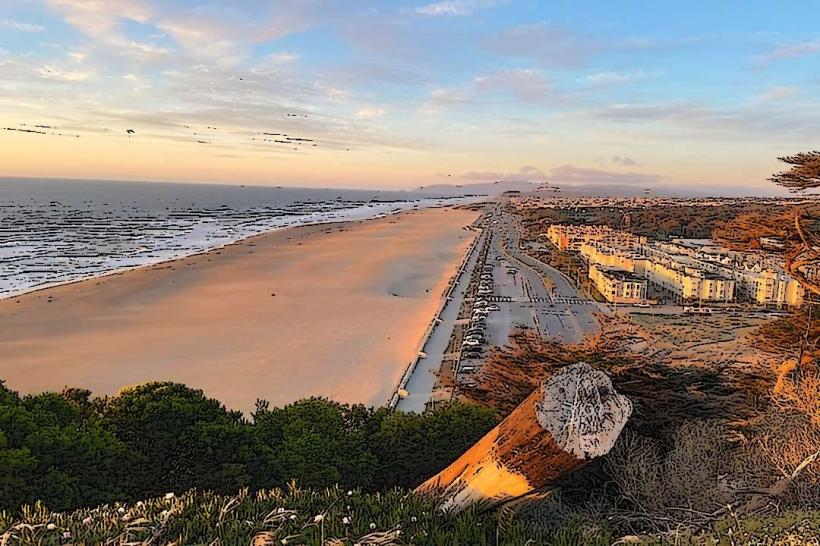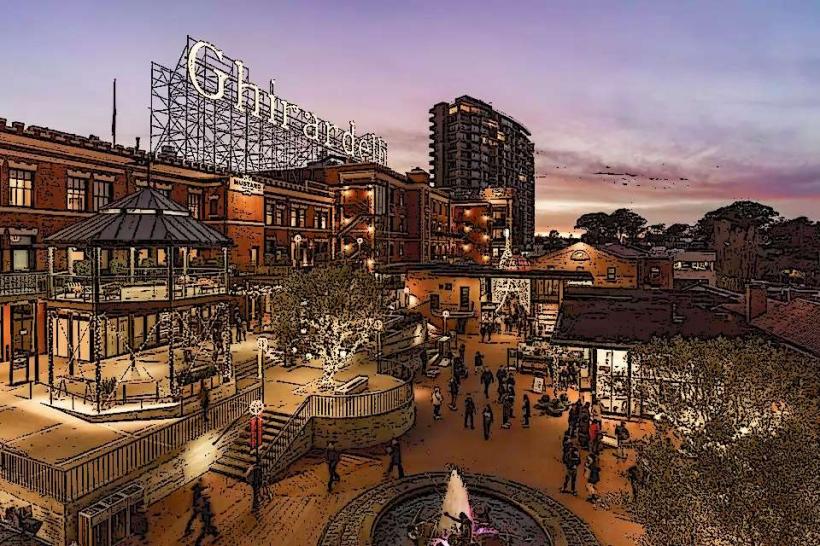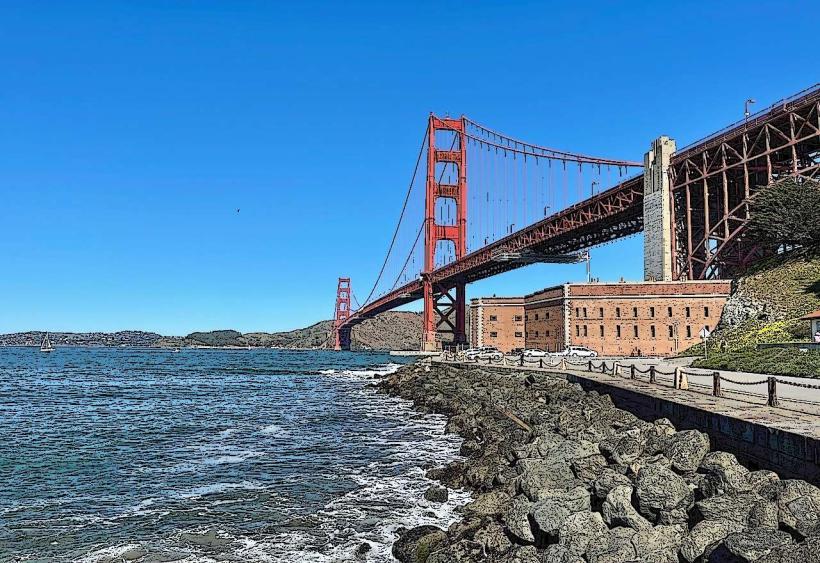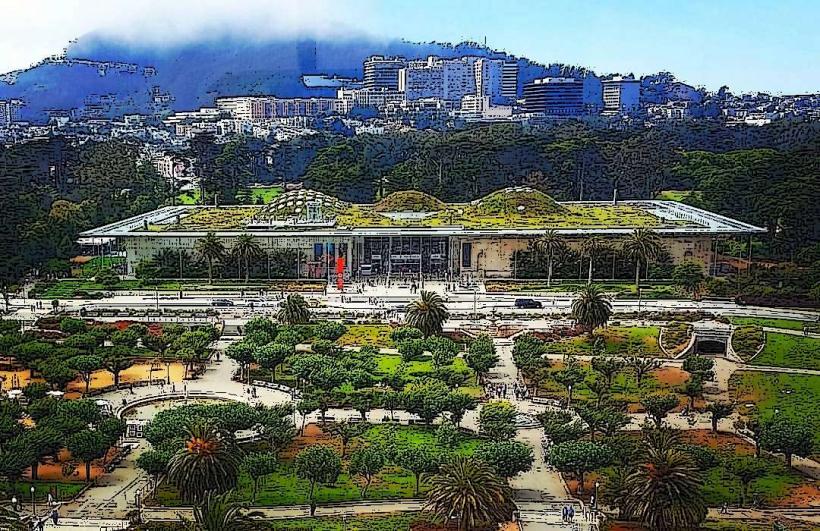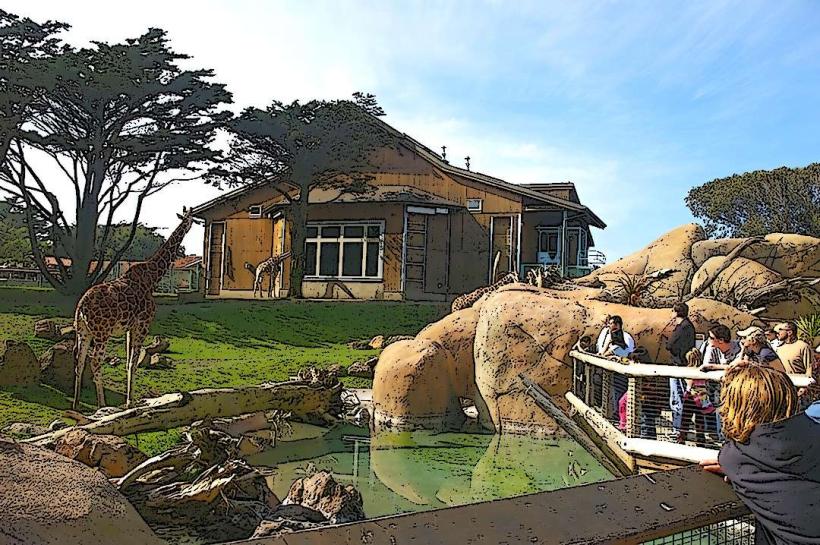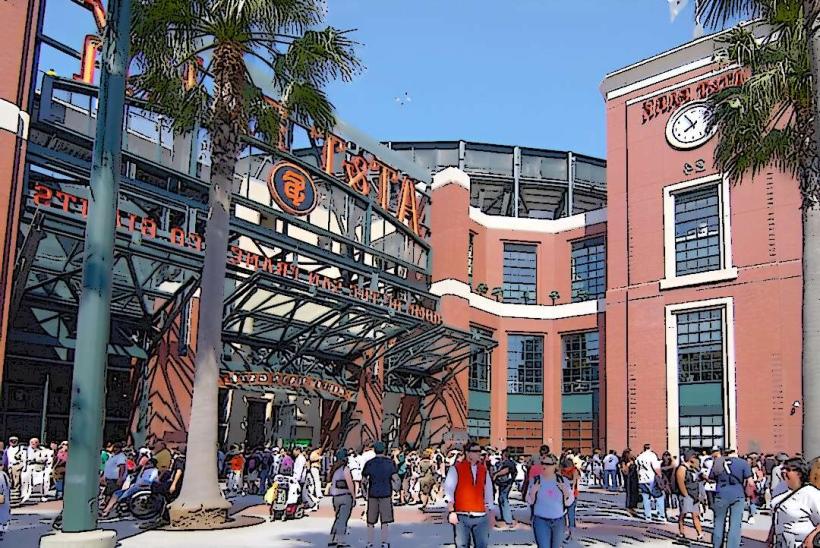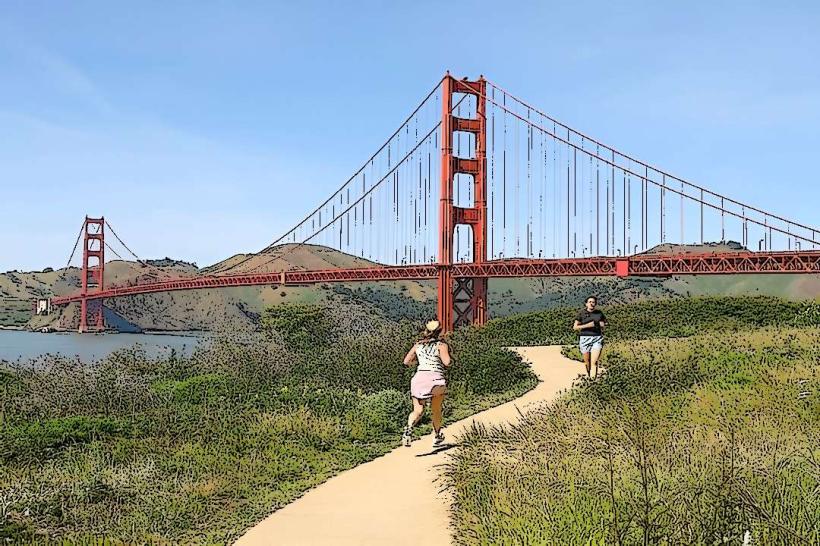Information
Landmark: Golden Gate BridgeCity: San Francisco
Country: USA California
Continent: North America
Golden Gate Bridge, San Francisco, USA California, North America
The Golden Gate Bridge is an iconic suspension bridge located in San Francisco, California, spanning the Golden Gate Strait, which is the entrance to the San Francisco Bay from the Pacific Ocean. It is one of the most recognizable structures in the world and a symbol of San Francisco, drawing millions of visitors every year.
Historical Background and Construction
Planning and Design: The idea of a bridge linking San Francisco to Marin County across the Golden Gate Strait was initially proposed in the early 20th century. The strait is 1.7 miles (2.7 kilometers) wide at its narrowest point, and the strong tides and winds of the area posed significant engineering challenges.
The bridge was designed by Joseph Strauss, a civil engineer who had initially proposed a hybrid cantilever-suspension bridge. However, the final design was heavily influenced by Irving Morrow, an architect who suggested the Art Deco style and the striking "International Orange" color. He also played a key role in refining the bridge’s design to make it aesthetically pleasing, with streamlined features.
The renowned bridge engineer Leon Moisseiff also contributed to the design, refining the structural engineering aspects. The bridge's suspension design was chosen because it could withstand the strong winds and seismic activity of the region, and the structure's strength-to-weight ratio allowed it to span a large distance without requiring massive supports in the water.
Construction Timeline: Construction of the Golden Gate Bridge began in 1933, during the height of the Great Depression. Despite the economic conditions, the project employed thousands of workers, many of whom were highly skilled in bridge-building techniques.
The bridge was completed in 1937, and at the time, it was the longest suspension bridge in the world, with a total length of 1.7 miles (2.7 km).
The construction of the Golden Gate Bridge was a monumental engineering achievement, given the challenging environment. The strait has strong tidal currents, frequent fog, and strong winds, all of which made construction difficult. The project also faced skepticism, with many questioning whether such a large and ambitious bridge could ever be built.
Challenges: One of the most significant challenges was the strong tides in the strait, which made it difficult to position and anchor the bridge. There were also concerns about the strong earthquakes that the region is prone to, requiring the engineers to design a bridge that would not only be aesthetically pleasing but also resilient enough to withstand seismic activity.
Fatalities: While construction was underway, there was a tragic loss of life. 11 workers died during the building of the bridge, but it’s considered a relatively low number for such a large-scale project. One of the factors that helped minimize fatalities was the innovative use of a safety net. This net saved the lives of many workers who fell during construction.
Structural Design
The Golden Gate Bridge has a classic suspension bridge design, which means the bridge’s roadway is suspended by cables that run between two towers. The bridge’s design consists of several key components:
Towers: The two towering vertical supports rise 746 feet (227 meters) above the water, making them taller than the Washington Monument. These towers are made of steel and are designed to support the weight of the bridge and the cables that hold the bridge’s deck in place. The design of the towers is elegant yet functional, with Art Deco-style details that add to the bridge's visual appeal.
Cables: The bridge’s primary support comes from the two thick suspension cables, each made up of thousands of individual steel wires. The cables are incredibly strong and stretch over the towers, passing through large anchorages at both ends of the bridge. These cables carry the weight of the bridge deck, transferring the load to the towers.
The total length of these cables is about 80,000 miles (129,000 km), enough to circle the Earth three times! The cables are coated in a special material to protect them from corrosion caused by the salty ocean air.
Deck: The bridge’s deck, or roadway, is supported by the cables. The roadway is 90 feet (27 meters) wide and consists of six lanes of traffic in its modern configuration. Originally, the bridge was designed to have four lanes, but with increasing traffic over the decades, two additional lanes were added to accommodate more vehicles.
Suspension: The roadway is hung by steel cables and is suspended in mid-air. The weight of the bridge deck is distributed by the cables, allowing it to hang in place while remaining stable despite wind, traffic loads, and other stresses. The design’s key benefit is its ability to flex and sway with the wind, which prevents the bridge from being damaged by powerful gusts.
Color and Aesthetic Features
The Golden Gate Bridge is known for its distinctive International Orange color, which was selected to enhance the bridge’s visibility in the often foggy conditions of the San Francisco Bay. This color also complements the natural landscape of the area, including the surrounding hills and the redwood forests of Marin County. The color was initially selected to improve visibility, but over time it became an integral part of the bridge’s identity.
The bridge’s Art Deco styling is seen in both its structural elements and decorative features. The approach spans, lighting fixtures, and other elements are designed in a streamlined, geometric fashion, contributing to the overall beauty of the structure.
Cultural Impact and Symbolism
The Golden Gate Bridge is a cultural landmark, representing innovation, resilience, and beauty. It has been the subject of countless photographs, films, and artworks, becoming a symbol of both San Francisco and the American spirit of engineering excellence.
In Film and Media: The bridge is perhaps most famous for its appearances in films, TV shows, and commercials. It is often shown in the background of scenes set in San Francisco, symbolizing the city’s vibrancy and modernity. Some notable films featuring the Golden Gate Bridge include "Vertigo" (1958), "The Bridge on the River Kwai" (1957), and more recently, "San Andreas" (2015).
Tourism: The bridge is a top tourist attraction, drawing millions of visitors every year. There are several viewpoints around the bridge, including Crissy Field, Baker Beach, and the Marin Headlands, that offer spectacular views of the structure. Visitors can also walk or bike across the bridge, making it an iconic part of the San Francisco experience.
Seismic Retrofitting and Maintenance
Given the region’s seismic activity, the bridge has undergone several seismic retrofits to ensure it can withstand earthquakes. The bridge’s original design was not intended to handle a major earthquake, but modern engineering techniques have strengthened the structure, especially around the tower foundations and the deck. These updates have ensured the bridge’s survival through major seismic events.
In addition to seismic retrofitting, the bridge undergoes regular maintenance to protect it from the harsh coastal environment. The bridge is repainted regularly to prevent corrosion from the salty ocean air. In fact, the bridge requires about 50,000 gallons (190,000 liters) of paint every year to maintain its iconic color and protect the steel.
Conclusion
The Golden Gate Bridge is not just an engineering marvel but also a cultural and historical symbol. Its design, color, and sheer scale make it one of the most recognizable structures in the world. It embodies the spirit of innovation and perseverance, having withstood decades of natural elements, human activity, and evolving engineering challenges. As a piece of infrastructure, it remains an essential link in the transportation system of the San Francisco Bay Area, while its status as a global icon continues to captivate people from around the world.

